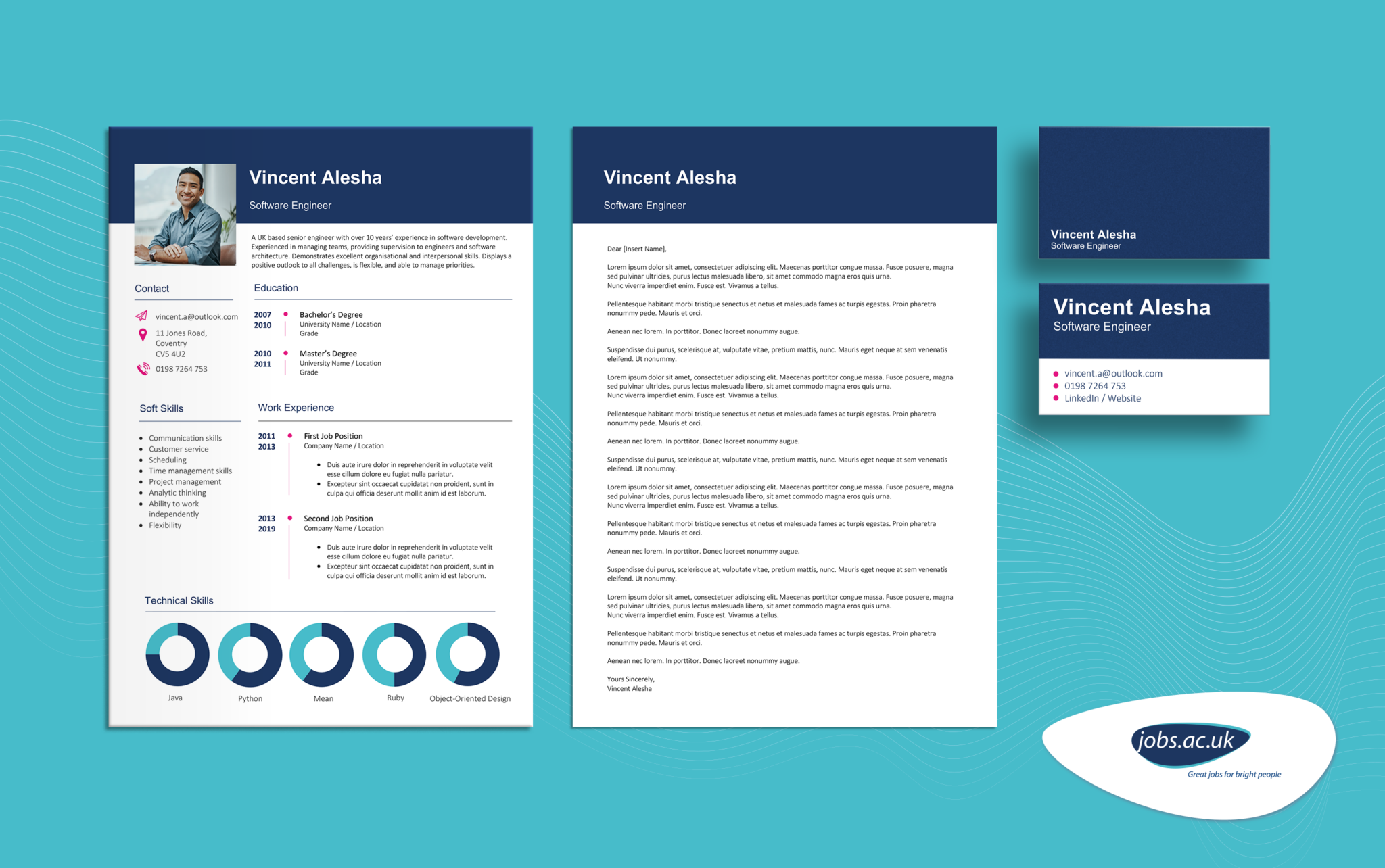How to Choose the Right CV Template for Your Job Application

In today’s competitive job market, your CV (curriculum vitae) is often the first impression a potential employer will have of you. A well-organized, clear, and visually appealing CV can significantly increase your chances of landing an interview. One of the easiest ways to create a professional-looking CV is by using a CV template.
In this article, we’ll explore how to choose the right CV template for your job application, and how to tailor it to highlight your strengths and qualifications in the best possible light.
1. Why Use a CV Template?
A CV template is a pre-designed document with sections and placeholders that make it easier for you to fill in your personal information, work experience, and skills. Using a template can save you time, help you organize your information in a logical way, and ensure that your CV looks polished and professional.
Here are a few reasons why using a CV template is a smart choice:
- Time-Saving: Templates provide a framework, so you don’t have to worry about formatting or layout, allowing you to focus on the content.
- Consistency: Templates ensure that your CV looks uniform and easy to read, which is key to making a good impression.
- Professional Design: Well-designed templates often incorporate modern design elements like clean fonts, bullet points, and space for key information, making your CV look more polished.
2. Types of CV Templates
There are various types of CV templates, each suited for different industries and job roles. When choosing a template, consider your industry and personal preferences. Here are a few common types:
a. Traditional CV Template
A traditional CV template follows a classic structure, usually with sections for personal information, professional experience, education, skills, and references. This style is often used in fields like finance, law, and education, where employers value a straightforward and professional layout.
- Best for: Corporate roles, finance, law, or more formal industries.
- Key features: Simple layout, clear headings, and minimal design elements.
b. Creative CV Template
For jobs in the creative industries, such as marketing, design, or media, a creative CV template can help you stand out. These templates often allow for more graphic design elements, like color, icons, and infographics. They are perfect for showing off your design skills or creative flair.
- Best for: Creative industries like design, marketing, advertising, and media.
- Key features: Use of color, icons, and non-traditional layouts.
c. Modern CV Template
A modern CV template strikes a balance between simplicity and design. These templates often have clean lines, contemporary fonts, and organized sections that make the CV easy to read, while still looking stylish. They can be adapted for almost any industry, from tech to education to healthcare.
- Best for: Tech, startups, or any industry where a balance of professionalism and modern style is valued.
- Key features: Clean design, modern fonts, clear section breaks.
d. Functional CV Template
Functional CV templates emphasize skills and abilities over work experience. This is particularly useful for people who have gaps in their employment history or who are changing careers. The focus is on what you can do, rather than where you’ve worked in the past.
- Best for: Career changers, those with limited work experience, or people with gaps in employment.
- Key features: Focus on skills and qualifications rather than chronological work experience.
e. Combination CV Template
A combination CV template blends both chronological and functional CV styles. It allows you to showcase your skills and accomplishments while also providing a detailed work history. This is a great option for individuals who have significant experience but also want to highlight specific skills.
- Best for: Experienced professionals who want to emphasize both their skills and work experience.
- Key features: Balanced structure, both skill-focused and work history-focused sections.
3. Key Sections to Include in Your CV
Regardless of the type of CV template you choose, certain sections are essential for all job applications. Here’s what your CV should generally include:
- Contact Information: Name, phone number, email address, and LinkedIn profile (optional).
- Professional Summary: A brief statement that summarizes your skills, experiences, and career goals. This section should be tailored to the specific job you’re applying for.
- Work Experience: List your relevant professional experience, including job title, company name, and dates of employment. Focus on achievements and responsibilities that demonstrate your skills.
- Education: Include your degrees, certifications, and relevant courses or training.
- Skills: List technical and soft skills that are relevant to the job. This can include software proficiency, languages, and communication abilities.
- Additional Sections: Depending on the role, you may want to include sections like volunteer experience, certifications, publications, or professional affiliations.
4. How to Customize Your CV Template
Once you’ve selected a CV template, it’s essential to customize it to reflect your unique experience and qualifications. Here are some tips to make your CV stand out:
a. Tailor the Content for the Job
Your CV should be tailored to the specific job you’re applying for. This means adjusting your professional summary, skills, and work experience to match the job description. Use keywords from the job posting to help your CV pass through Applicant Tracking Systems (ATS), which many companies use to screen candidates.
b. Focus on Achievements, Not Just Duties
When describing your work experience, focus on accomplishments rather than just job duties. Highlight specific results, such as increasing sales, improving processes, or leading successful projects. Quantify your achievements when possible (e.g., “Increased website traffic by 40%”).
c. Keep It Concise
A CV should be concise and to the point. Aim for one to two pages, depending on your level of experience. Avoid unnecessary details or long paragraphs—use bullet points and short sentences to make it easy for the reader to scan quickly.
d. Ensure Consistency
Ensure that the formatting of your CV is consistent throughout. Use the same font, size, and spacing across sections. If your template includes headings in bold, ensure all headings follow the same style. Consistency makes your CV look polished and professional.
5. Where to Find High-Quality CV Templates
There are plenty of places where you can find free and paid CV templates. Some websites offer a wide range of styles, from simple and professional to more creative designs. Here are a few popular sources:
- Canva: Canva offers both free and premium CV templates with a wide variety of styles. It’s easy to customize the templates using their drag-and-drop design tools.
- Microsoft Word: If you have Microsoft Office, Word has a built-in selection of CV templates. These are straightforward and professional but may not offer the creative options found elsewhere.
- Novoresume: This platform provides well-organized, modern CV templates, and also includes tips for creating your CV and optimizing it for ATS.
- Zety: Zety offers customizable CV templates that are professional and well-structured, with a variety of designs to suit different industries.
- Envato Elements: If you’re looking for premium CV templates, Envato Elements offers high-quality designs for a subscription fee.
6. Final Thoughts: Choosing the Right CV Template
When choosing a CV template, think about the industry, job position, and your own preferences. A clean, professional design is essential for more traditional fields, while a creative, eye-catching layout might be better suited for industries like design or media. Regardless of which template you choose, make sure to personalize it with your experience, skills, and achievements, tailoring your CV to each specific job application.
Using a well-designed CV template can save time, help you stay organized, and create a polished resume that stands out to potential employers. The right template, paired with thoughtful customization, can set you on the path to securing your next opportunity.
also read: Anne Hathaway Children





